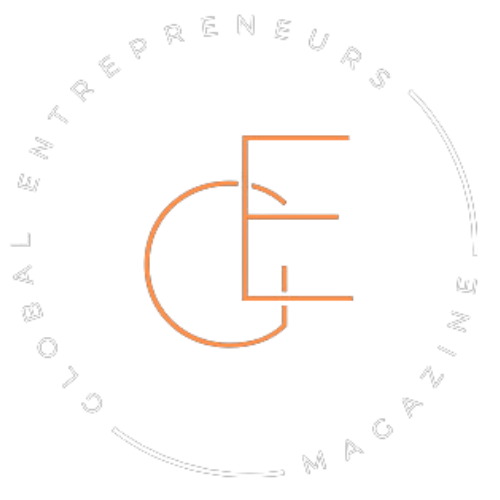She wasn’t short on ambition—just hours in the day.
Between writing proposals, answering DMs, updating her website, and following up on invoices, Mia barely had time to breathe. Her coffee always went cold. Her ideas stayed stuck in her notes app, waiting for that mythical “free weekend” that never came. She had started her business to feel free. But instead, she was working longer hours than she did at her old 9-to-5.
Sound familiar?
For many entrepreneurs, the dream of running your own business comes with a hidden price tag: your time. The tasks you thought would be minor turn into hours lost every week. And suddenly, the work you love—the
The myth that won’t go away: AI as a job thief
The fear didn’t come out of nowhere. Somewhere between the headlines about robots replacing humans and the dramatic forecasts from think tanks, a simple story took hold: AI is coming for your job.
It’s a powerful narrative. And scary, too. Especially when you’re a small business owner trying to build something from scratch. You hear “automation” and picture layoffs, not relief.
But here’s the thing—most of the people shouting about AI taking over aren’t the ones up late doing their own bookkeeping. They’re not the ones spending hours writing Instagram captions or sifting through customer emails on a Sunday night. Entrepreneurs live in a different reality. One where there are never enough hands to do the work—and where burnout is always one bad week away.
So, when AI shows up with a quiet offer—let me handle the repetitive stuff—it’s not a threat. It’s a lifeline.stuff, the strategic stuff—gets buried under the daily grind.
That’s where this conversation around AI really begins. Not in a tech lab. Not with robot takeovers. But with tired entrepreneurs who just want a little of their time back.
The myth that won’t go away: AI as a job thief
The fear didn’t come out of nowhere. Somewhere between the headlines about robots replacing humans and the dramatic forecasts from think tanks, a simple story took hold: AI is coming for your job.
It’s a powerful narrative. And scary, too. Especially when you’re a small business owner trying to build something from scratch. You hear “automation” and picture layoffs, not relief.
But here’s the thing—most of the people shouting about AI taking over aren’t the ones up late doing their own bookkeeping. They’re not the ones spending hours writing Instagram captions or sifting through customer emails on a Sunday night. Entrepreneurs live in a different reality. One where there are never enough hands to do the work—and where burnout is always one bad week away.
So, when AI shows up with a quiet offer—let me handle the repetitive stuff—it’s not a threat. It’s a lifeline.
What AI actually does for entrepreneurs

Most entrepreneurs aren’t using AI to build empires overnight. They’re using it to make it through Monday.
It’s the virtual assistant that drafts your emails before breakfast. The tool that cleans up your podcast transcript while you’re on a call. The quiet system that sorts your receipts, schedules your posts, and nudges you when something’s falling behind.
It’s not flashy, and it’s not perfect—but it works.
You’re not handing over your brand. You’re not replacing your team. You’re just offloading the things that eat up hours and don’t need your brainpower. AI can’t replace your vision. But it can clear the clutter so you can finally focus on it.
Time is the real currency—and AI gives it back
Angela runs a boutique marketing studio. She didn’t start using AI because it was trendy. She started because she was tired.
Tired of juggling admin work in the evenings. Tired of writing the same client follow-up for the tenth time. Tired of never finishing her own content because client work always came first.
So, she set up a few basic tools. An AI draft assistant for her blog outlines. An auto-responder that could handle FAQs. A transcription tool that turned voice notes into rough post ideas. It wasn’t some grand system overhaul. But it bought her 15 hours back that first month.
She used that time to reconnect with old clients. To breathe. To write something just for herself.
No mastermind. No growth hack. Just space.
Time is the real currency—and AI gives it back
Angela runs a boutique marketing studio. She didn’t start using AI because it was trendy. She started because she was tired.
Tired of juggling admin work in the evenings. Tired of writing the same client follow-up for the tenth time. Tired of never finishing her own content because client work always came first.
So, she set up a few basic tools. An AI draft assistant for her blog outlines. An auto-responder that could handle FAQs. A transcription tool that turned voice notes into rough post ideas. It wasn’t some grand system overhaul. But it bought her 15 hours back that first month.
She used that time to reconnect with old clients. To breathe. To write something just for herself.
No mastermind. No growth hack. Just space.
The new partnership: human + AI, not human vs. AI
Nobody tells a better brand story than you. Nobody understands your audience quite like you do. But that doesn’t mean you have to do everything alone.
AI isn’t trying to replace your instinct or creativity—it can’t. What it can do is play the supporting role so you’re not drowning in the logistics.
Think of it like a sous-chef in your kitchen. You’re still the one creating the recipe. AI just preps the ingredients and washes the dishes.
It helps you move faster without cutting corners. It gets the routine stuff out of the way so your best work gets more room to breathe. And when used right, it can actually sharpen your decision-making—not dull it.
This isn’t about competition. It’s about finally getting a real partner that doesn’t ask for a paycheck, a break, or a meeting.
Why smart entrepreneurs are embracing—not resisting—AI
Talk to anyone running a lean business, and you’ll hear the same thing: they’re done glorifying the hustle.
The new goal isn’t to work more—it’s to work smarter.
That’s why more and more entrepreneurs are quietly bringing AI into their workflow. Not because it’s trendy, but because it helps them stay sane. They’re not automating because they’re lazy. They’re automating because they’ve learned the cost of doing everything themselves.
Copywriters are using AI to brainstorm faster. Course creators are speeding up production without sacrificing quality. Coaches are building smarter systems that let them focus on their clients instead of their calendars.
They’re not giving up control. They’re just choosing to spend their time where it actually counts.
Closing story: same entrepreneur, new day
Mia still runs her business. Still signs off on client work. Still maps out strategy over coffee.
But now, her mornings start quiet. No inbox chaos. No scramble to post on five platforms. No back-to-back admin tasks waiting to be checked off.
She has a rhythm. A system. Breathing room.
She didn’t scale by outsourcing her soul—she just stopped treating her time like it was infinite. The same tasks still get done. But she’s no longer the one doing all of them.
And now? She’s working on that course idea she shelved a year ago. Planning a trip. Actually enjoying the business she built.
Not because she worked harder. Because she finally worked differently.
Final takeaway: AI isn’t the villain—it’s the assistant you’ve always needed
The story was never about machines replacing people. It’s always been about people trying to keep up—and finally finding tools that help them stop drowning.
AI won’t build your vision for you. But it will free up the time you need to build it yourself.
So if your to-do list keeps growing and your energy keeps shrinking, maybe it’s not more hustle you need. Maybe it’s help.
The kind that shows up quietly. Handles the busywork. And gives you back the hours that actually matter.
Because your best ideas deserve more than a late-night time slot. They deserve a clear calendar—and a clear mind.




